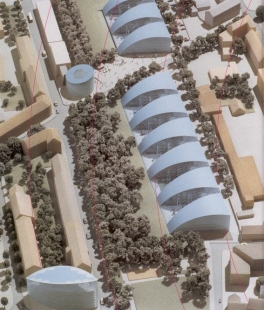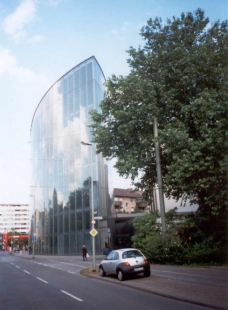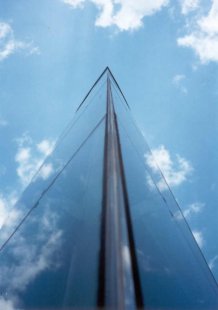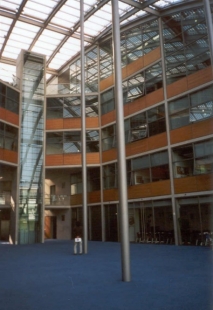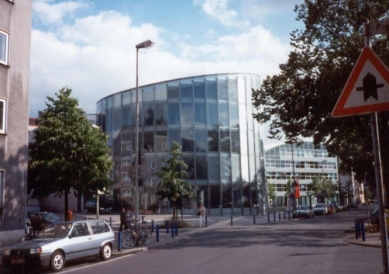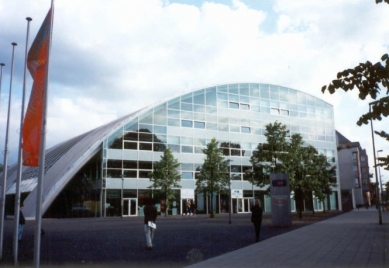
Microelectronic Centre

In Duisburg, the very popular British architect Sir Norman Foster is the author of the urban version of a technology park, which specializes in the development and production of microelectronic components, robots, etc. Notably, there is a micro-submarine that transports medication to the affected area within human veins without affecting other parts of the body through side effects.
As for the urban integration of the park into the structure of the city, it is very pleasant. The individual parts of the technology center respond to the surrounding context, and their orientation follows a consistent low-energy concept of buildings, primarily realized through open atriums that assist with air conditioning through the chimney effect and serve as winter gardens. The atriums enliven the interior of the building and create interesting spatial compositions.
The external form of the buildings follows Foster's "swing direction," which involves a certain incompleteness in the structures; the superficial formal trimming of cylindrical masses was probably the last masterstroke in the project’s journey; however, the operational and functional relationships of the objects are managed very well.
As for the urban integration of the park into the structure of the city, it is very pleasant. The individual parts of the technology center respond to the surrounding context, and their orientation follows a consistent low-energy concept of buildings, primarily realized through open atriums that assist with air conditioning through the chimney effect and serve as winter gardens. The atriums enliven the interior of the building and create interesting spatial compositions.
The external form of the buildings follows Foster's "swing direction," which involves a certain incompleteness in the structures; the superficial formal trimming of cylindrical masses was probably the last masterstroke in the project’s journey; however, the operational and functional relationships of the objects are managed very well.
The English translation is powered by AI tool. Switch to Czech to view the original text source.
0 comments
add comment


